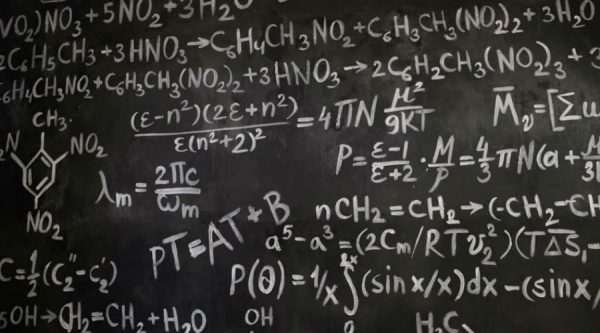Sarah Ferguson is a Prep teacher at Clairvaux Catholic primary school in Belmont, near Geelong, Victoria. She has been working with Australian academics Dr Jill Cheeseman and Dr Andrea McDonough to explore young students’ perceptions of maths learning.
The children, who were aged five to seven and all in their first two years of school in Victoria, were asked to choose a time and a place when they were ‘learning maths well’ and draw a picture of it. They were encouraged to think about details such as who was there and what was happening.
‘Active’ maths learners
Ferguson tells Teacher several themes emerged. ‘[The main findings were] that: young children can recall with clarity mathematical experiences from their lives either at home or at school, even when the event is not recent; young children view mathematics as many things (measurement, numbers, materials, shape, etcetera); many young children view mathematics as a social experience working beside or with others (children, parents and teachers); and, mathematics is something the children were doing – manipulating materials, talking, writing, using calculators. That is, the children were active learners and maths wasn’t shown as something ‘done to them’ or that they were passive.’ She says the results also showed children really treasure the times they get to talk to their teacher one on one.
The study involved 208 children and was part of a wider research project titled Fostering Inquiry in Mathematics (FIiM). Teachers used the PPELEM (Pupil Perceptions of Effective Learning Environments in Mathematics) drawing and description tool developed by McDonough. The children were also asked to describe the situation they’d drawn – either through a piece of writing or transcription by the teacher.
Ferguson says one of the surprising things was the detail children put into their drawings and descriptions. Giving an example of one child who drew a picture of the classroom whiteboard with a number line and jumps to show counting by twos, she says: ‘The detail with my chair, the whiteboard wheels and even the sunglasses on my head was quite amazing. This event had happened months before this drawing was done. Another child drew a poster we used to have on our classroom wall which the class created together about ways to make 10. Again, the detail was impressive.’
She adds, overall, the drawings and descriptions showed a positive view of mathematics. ‘The drawings were bright with lots of smiles and there was a real sense of joy in the children recalling this mathematical experience.’
Which activities did children remember?
Ferguson, Cheeseman and McDonough presented their findings at the MERGA (Mathematics Education Research Group of Australasia) annual conference last month. In their MERGA paper, the authors report ‘mathematical manipulatives’ such as countable objects and geometric materials featured most often (66 times), while 51 drawings included representations such as number lines, number charts, tens frames and cards. Counting was a focus of many of the responses – 50 included counting activities and 34 children drew objects used for counting.
The people they included in the picture also offered some interesting insights. The child was alone in 62 of the drawings – Ferguson, Cheeseman and McDonough say that’s unsurprising given they asked children to draw a time when they were learning maths well. In 57 drawings, the child was interacting with another child, while parents (both mothers and fathers) appeared in 33 drawings and teachers appeared in 31.
For location, only four children drew maths learning in a classroom setting. The authors report learning with a teacher was often portrayed as learning individually with their teacher. Outside school, children recalled practical maths with their families in settings such as supermarkets (for example, one child recalled counting apples in 10s and learning that two groups of five is 10).
Informing classroom practice
Ferguson says she will do PPELEM every year with her preps to see what they’re thinking about in maths. After analysing the drawings and descriptions completed by children in her own class during last year’s study, calculators made regular appearances. ‘The children were able to clearly tell me what they were learning when they used the calculator, such as “I learnt that 800 plus 800 is 1600!” (said with delighted surprise),’ she reported to MERGA. ‘Using the calculators to skip count and investigate patterns was one of the suggested tasks from the FIiM project in which I was involved. Clearly this task resonated with the children who recalled with photographic clarity participating in the task, could articulate clearly what they had learnt, and communicated their enthusiasm and engagement with using calculators.’
She realised the calculators allowed her students to investigate numbers they hadn’t talked about in the classroom (larger numbers and negative numbers) and gave them a sense of agency and control over their learning. As a result, Ferguson has used calculators more in the classroom and made them available during ‘free time’.
Reflecting further on the PPELEM study, Ferguson tells Teacher she is now more aware of the importance of visual displays for maths, and the benefits of leaving them on the classroom walls even when the topic is finished. ‘The children do notice them and think about them so the learning can continue. Also, so many children recalled conversations between them and their teacher. This reminded me of how important it is to have mathematical conversations with children individually – even if they are brief – as the children really treasure these moments and the learning can be so effective this way.’
Sarah Ferguson says the results of the PPELEM study reminded her how important it is to have mathematical conversations (even brief ones) with children individually. How often do you take time to chat to students one on one about their learning? Is there a way you could plan this into your weekly routine?








